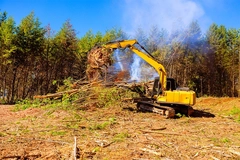
- Industry news
Industry news
- Category news
Category news
- Reports
- Key trends
- Multimedia
- Journal
- Events
- Suppliers
- Home
- Industry news
Industry news
- Category news
Category news
- Reports
- Key trends
- Multimedia
- Events
- Suppliers
FSANZ Releases Sulphites in Foods Survey

Sulphites, which occur naturally in foods and in the human body, are widely used to preserve food and have antioxidant and antimicrobial properties.

26 April 2012 --- A survey of sulphites in foods shows that almost all foods tested had sulphite levels well below those allowed in the Food Standards Code.
The survey, which looked at sausages, cordial and dried fruit, was conducted by Food Standards Australia New Zealand and state and territory agencies.
FSANZ Chief Executive Officer Steve McCutcheon said the work built on previous surveys of sulphites undertaken by food regulators in Australia and would help inform work on a proposal looking at the use of sulphites.
“The results showed only three sausages out of 156 had levels above the limits set in the Food Standards Code,” Mr McCutcheon said.
“These exceedances have been reported to the relevant state or territory agency for follow up.”
Sulphites, which occur naturally in foods and in the human body, are widely used to preserve food and have antioxidant and antimicrobial properties.
They have been linked to allergy-like symptoms and asthmatic reactions in people who are sensitive to sulphites have been reported.
Like many additives, sulphites have an acceptable daily intake level (ADI) which is an estimate of how much of a chemical can be ingested daily over a lifetime without appreciable risk to health.
The use of sulphites is regulated by the Food Standards Code and dietary exposure is monitored. The Code also requires any added sulphites above a certain level to be declared on a label in the ingredients list.
FSANZ is considering the overall dietary exposure to sulphites across a wide range of food groups to ensure there are no food safety concerns for the whole population.










